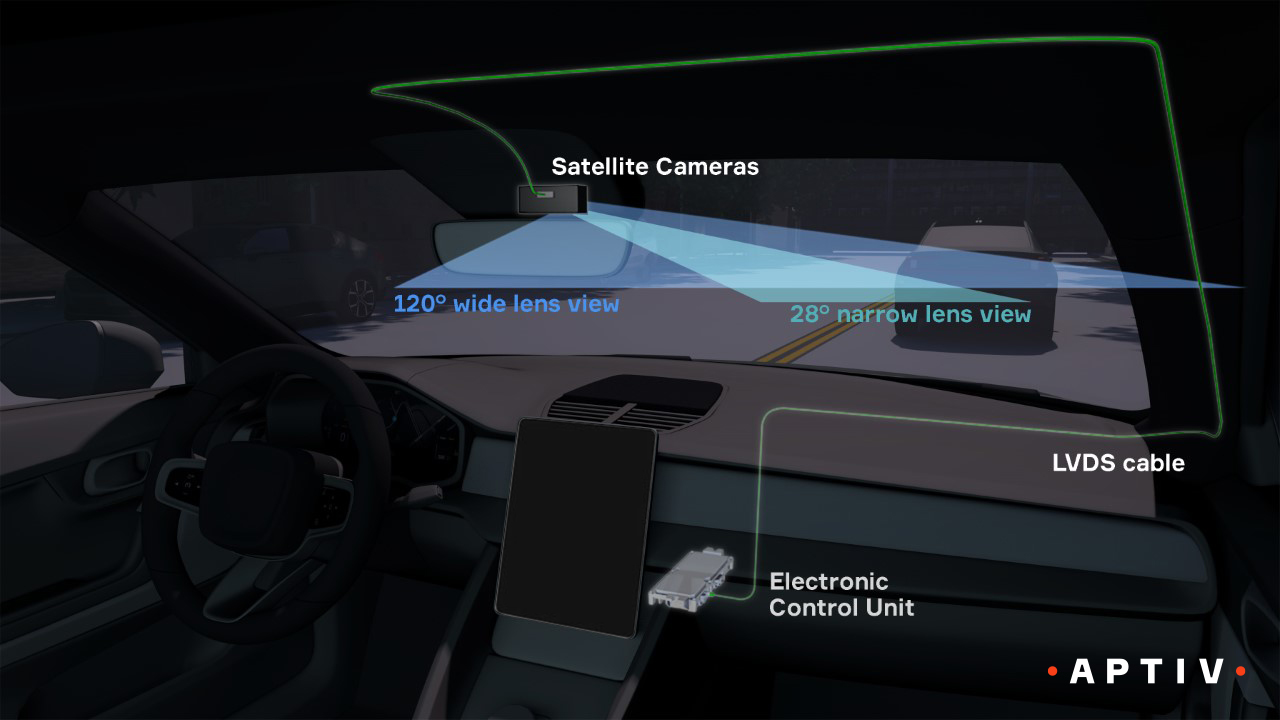A Clear View on Advanced Vision Solutions
Better perception systems mean better advanced driver-assistance systems (ADAS). The higher the quality of the data that these systems receive from their radars, cameras and lidars, the more informed decisions they can make.
Recently, new vision processor options have emerged, promising a more than fourfold increase in camera resolution over the previous generation to 8 megapixels and an increase in the field of view from 100 degrees to 120 degrees. A wider field of view allows the system to detect pedestrians, cyclists and other objects that might cross into the path of the vehicle sooner. The higher resolution allows the system to identify objects with more certainty and at longer distances, providing the vehicle with a more accurate depiction of its position within the environment. These enhanced vision solutions form an important part of powering the next generation of ADAS functionality.
To achieve the increased performance, the new cameras have higher power requirements, require larger power supplies and generate far more heat than previous generations. Depending on the OEM requirements for thermal management, this can create an engineering dilemma, as forward-facing cameras are typically tucked in front of the rearview mirror – a high-heat location already. As such, putting a higher-powered vision processor and all of the related components behind the windshield may require undesirable tradeoffs.
To solve this challenge, Aptiv takes a differentiated approach, powered by the brain and nervous system capabilities that are at the core of our Satellite Architecture. Aptiv’s engineers split the components, putting forward only the camera optics on the windshield, while locating the processing chips in a controller behind the vehicle interior trim. On the windshield we include a camera with a heated lens to prevent condensation, an imager with a CMOS sensor to capture the image, and a serializer that transmits the data via a low-voltage differential signaling (LVDS) bus to the vision processor in a separate controller, which can be flexibly located based on our customers' requirements. Ethernet will likely take on that data-transmission role in the future.

Relocating
the vision processor – which accounts for a major portion of the heat generation and power consumption – makes heat dissipation much less of an issue and helps create a smaller, more optimized and reliable system. However, it does introduce
a new challenge as well. Sensor data must be perfectly synced in order for the system to work. Otherwise it would be like watching a movie where the frames don’t line up. This is where Aptiv’s integration and sensor fusion expertise help ensure all the data from various sensors is synced up with just the
right timing, and fused to form a robust environmental model for the vehicle to act on.
This is the latest example of how Aptiv’s Satellite Architecture can address issues that arise as more intelligence goes into today’s vehicles. By moving the vision processing away from the sensors at the edges, we create a more streamlined electrical architecture and enable higher functionality. As a result, even though future vision processors are expected to reduce their power requirements, this approach will continue to make sense in an increasing number of applications.
For example, we can fully integrate the vision solution into our safety domain controllers, where it can be combined with inputs coming from radar and lidar for a more complete 360-degree picture of the environment around the vehicle.
Because Aptiv develops both the brain and nervous system of the vehicle, we have unique expertise to bring together that data from throughout the vehicle, synchronize it the right way and ensure that the system can get the most benefit from these advanced sensors.
